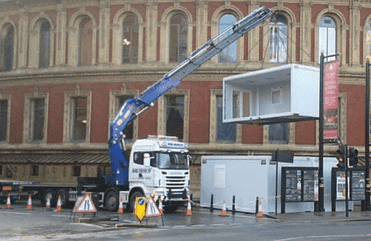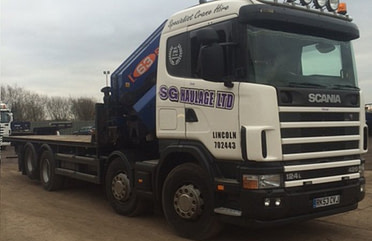With new advancements in technology emerging every day, it’s no wonder cranes have needed to become portable, accessible, and affordable for all. With these advancements, however, come new and challenging issues.
Between potential delays in production or hiring the wrong equipment, finding the right crane hire for your project can make or break your project. But where do you start?
Keep reading, and we’ll tell you everything you need to know about choosing the right crane for your project.
What to Consider When Hiring a Crane
Before we get to what sort of crane you need for your job, it’s important to understand a few key points.
The first thing to consider is cost. If you’re handling projects that are similar in type and scale, then purchasing a crane may be right for you. Most of the time, however, you will be better off renting a crane to suit each project.
Additional points to consider are:
- The load to be lifted
- The lift height required
- The horizontal moving distance
- The route to the job site
- On-site terrain
- Access to the project site
- Safety concerns
When it comes to understanding your individual needs, the right company should be able to assist you and recommend a crane based on that assessment. However, even in your own capacity, it’s useful to consider the points above and supply any relevant information as needed.
Common Cranes and Their Uses
Because there are so many types of cranes available today, it’s challenging to pick the right one for your specific needs. Whether you need a HIAB crane or something capable of tucking into a tiny space, there’s something out there for you.
The first thing you need to understand is that there are only two types of cranes. These are static cranes and mobile cranes. They both act as an umbrella category for specific models and designs and have varying advantages and disadvantages.
Static cranes are not particularly mobile, but once in place, they work very well for big construction sites. There are also several types of static cranes, and each one will serve a different purpose.
Mobile cranes are controlled via a cable and have a boom that operates telescopically. The difference between a mobile crane and a static one lies plainly in the name. Mobile cranes can be moved around freely on a job site.
Their setup tends to be less expensive than static cranes. This makes them a superb choice for smaller projects, as they are more practical overall.
What We Offer
We specialise in mobile units and have a handful of tried-and-true HIAB trucks and cranes.
Cormach Crane 65000E

With a maximum reach of 18 metres, the Cormach 65000 has a drawbar trailer for lorries. It can lift up to 12 tonnes and has a full 360-degree movement capable of tackling a variety of different needs work. Most knuckle boom crane manufacturers use the Cormach systems for their large, high-capacity units.
PM63026SP

The PM63026SP is a hydraulic loading crane that can lift up to 10 tonnes. It has a maximum reach of 17.5 metres, which is just under the Cormach 65000 in terms of reach. That being said, because of their hydraulic systems, these cranes can move their loads around with more dexterity.
Cormach 51000 E6

This HIAB crane can lift up to 10 tons and has a maximum reach of 14 metres. What makes the Cormach different from the other trucks we have available is that it comes with a tractor unit fitted with an extending flat or step frame trailer.
PM100029SP

A special crane because of its reach capabilities. Coming to a maximum of 22.5 metres and the capacity to lift 16.16 tons at 5 metres and 2.7 tons at 22.5 metres. So while it has the lowest high reach lift point, it’s an excellent choice for lifting items and objects into or onto taller buildings.
PK85002F

With slightly fewer hydraulic extenders than the PM100029SP and a maximum reach height of 17.8 metres, it seems like the PK85002F is the lesser choice. Don’t let that fool you. With hydraulic extenders that can support loads of up to 9 metres long and a 3 axle trailer. The PK85002F is also a tractor unit, which makes it great for transporting large crates and containers.
UK Crane Hire and Rental
The UK has specific health and safety requirements that vary from other countries. While the general rules will apply as a standard in most places, there are four key aspects to consider for the safe use of cranes:
- Supervision of lifting
- The planning of lifting operations
- Enacting a thorough examination
- Implementing a safe system of work
Cranes and other lifting tools must be of adequate strength and tested regularly to adhere to the UK’s requirements. We test our cranes and trucks every six months to ensure they’re at the peak of their performance.
When it comes to crane hire in the UK, it’s relevant to also note that the legal responsibilities are typically shared between the crane hirer and user. If you intend to hire a crane but don’t have the necessary competencies, you can opt for a ‘Contract Lift’ instead. This simply means that an individual or team are provided to you who are fully licensed to operate the machinery.
Find What Works For You
As cranes continue to evolve and change, so do the possibilities of their use. They’re becoming bigger while getting more nimble, and autonomous cranes are even being developed that use machine learning and AI to control them.
Cranes have given us the capacity to build structures that were once thought impossible. Think about what you could build and master with the right one at your disposal.
Have a look at what we can offer you for your crane hire needs and let’s see what we can make together.

